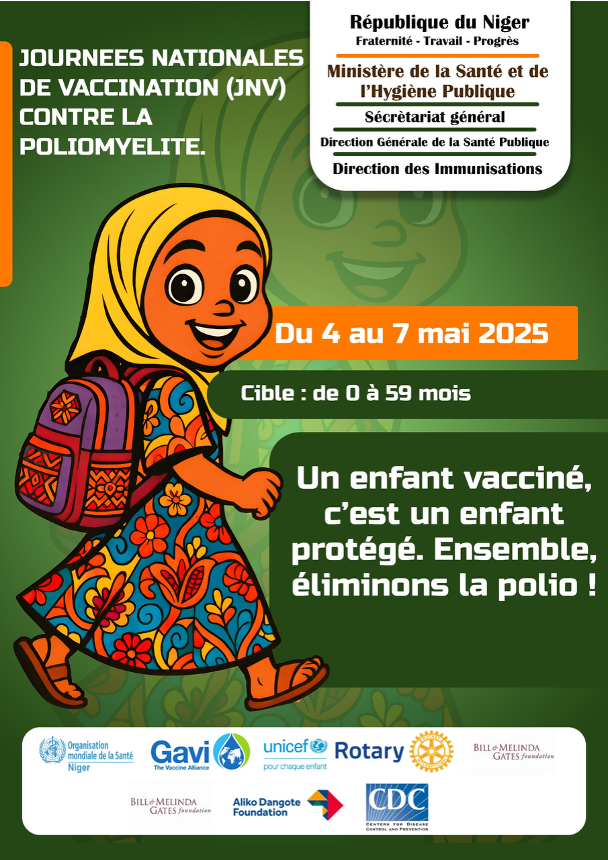Community mobilization and high-impact communication: a model for sustainable response

In May 2025, Niger launched a large-scale polio vaccination campaign that mobilized over 24,000 trained field agents and reached more than 9.2 million people across the country. By combining rigorous planning, community-driven outreach, and a multi-channel communication strategy, the campaign vaccinated nearly 3.9 million children, engaged vulnerable and mobile populations, and resolved 93% of recorded refusals. The approach sets a powerful precedent for future health emergencies and long-term system strengthening.
In a health context still marked by structural and logistical challenges, the nationwide polio vaccination campaign conducted in Niger in May 2025 stands out as a remarkable example of extensive community mobilization, supported by a rigorously planned multi-channel communication strategy. This multisectoral initiative, grounded in the synergy between social mobilization teams, local authorities, opinion leaders, media, and community relays, marks a major step forward in both polio eradication and strengthening public health systems.
The campaign was officially launched through 68 ceremonies in Health Districts (DS) and Regional Public Health Directorates (DRSP), sparking a momentum of collective action. These events were complemented by 2,280 advocacy meetings, engaging institutional and political actors around the urgency of vaccination. Social mobilization committees held 680 coordination sessions to refine messaging strategies and structure field interventions—ensuring coherent and effective coverage across the entire country.
In total, more than 9.2 million people were reached directly by 12,332 newly trained community relays, supported by 12,138 existing agents. Activities deliberately included often-overlooked groups such as internally displaced persons, refugees, nomadic, and transhumant populations—reaching over 128,000 people. Specific outreach was also conducted in markets, border posts, wells, and schools, embedding vaccination into everyday life.
The campaign leveraged a powerful mix of mass media and community-based communication. Health messages were disseminated through 216 radio broadcasts, 3 audiovisual TV productions, and 20 digital influencers—reaching an estimated 17 million people via television, 11.6 million via radio, and 3.8 million through digital platforms. This multi-channel approach, combined with town criers (13,558 people reached) and community meetings (13,840 participants), anchored the vaccination message in local culture and increased its acceptance.
Tangible impact
The results speak for themselves: 2,424,656 households were visited, leading to the registration of 3,898,335 children aged 0 to 5. Among them, 51 cases of acute flaccid paralysis (AFP) were identified and reported by community relays. Of the 246 instances of refusal recorded, 230 were successfully resolved thanks to targeted community dialogue strategies—demonstrating the effectiveness of the feedback and engagement mechanisms in place. These figures reflect strong community ownership and a high level of trust in public health systems.
Toward sustainable operational results
This campaign offers a compelling proof of concept for a scalable and replicable model built on three foundational pillars: rigorous planning, strong community engagement, and messaging adapted to local realities. The investment not only delivered strong public health indicators but also deepened trust between communities and institutions. This operational success, driven by clear political will, makes a strong case for increased support from technical and financial partners to sustain progress and scale similar initiatives.
Niger has shown that with coordinated leadership, well-deployed resources, and genuine community involvement, decisive progress toward polio eradication is possible. This performance- and accountability-driven model stands as a reference point for future public health interventions—one that calls for renewed investment in building resilient systems and maintaining long-term impact.

